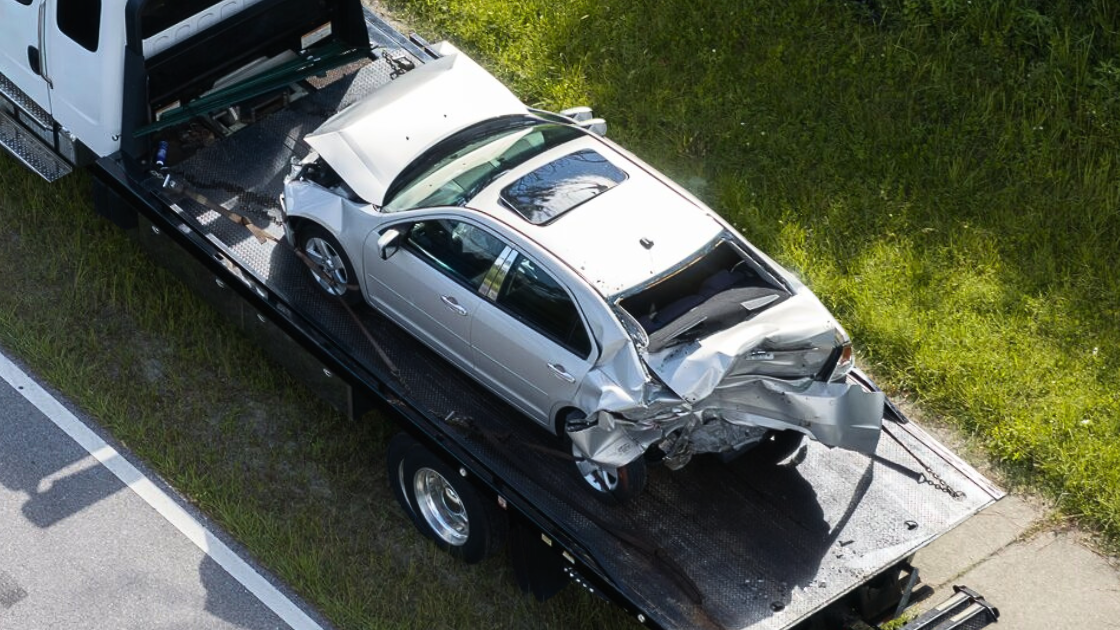Hey, everyone. We broke a new record this week: Most $185K+ jobs posted to the CDG Automotive Job Board in a single day. Looking for a new gig in the car biz? Keep scrolling for this week’s job board highlights (at the bottom). We’re just getting started.
—CDG
First time reading the CDG Newsletter? Subscribe here.

Is the Future All About Software?
In 2011, the very famous and very successful venture capitalist Marc Andreessen put it out there: “Software is eating the world.” A dozen or so years later, and it turns out he was right…even if he isn’t a car guy.
Software is eating the auto industry. Let me explain a little more: Software-defined vehicles, or SDVs—which are those vehicles armed with tech-powered capabilities that can be expanded and upgraded over time using software instead of physical parts—are becoming a bigger and bigger part of our automotive world.
Run the numbers:
Globally, the SDV market is expected to hit around $211 billion by 2032.
At that time, an estimated 95% of new vehicles sold will be “connected” using software tech.
Effectively, we’re working toward something like this:
Source: Viaduct
Clearly, that multi-layered market expansion represents a paradigm shift for the auto industry—which means new players, platforms, and cottage industries to watch. A few trends and names worth keeping an eye on?
Snapdragon has a digital chassis that acts as a cloud-connected platform continuously sensing and processing data from both inside and outside vehicles.
Elektrobit serves as the dedicated technology player for Jaguar Land Rover, Volkswagen, and Sony Honda Mobility’s Afeela prototype.
And Cybellum’s Digital Twins Platform generates accurate digital replicas of vehicle components to use in threat analysis and monitoring. Nissan reported an 80% decrease in mean time to detect vulnerabilities after implementing the tech.
And on the big tech side: Blackberry, Google, Apple, and Amazon have all publicly or privately worked on their own SDV technology stack.
So how is this massive pivot—from cars as mechanical feats of engineering to cars as software-dominated devices—going to change the auto industry? What happens when we really do have smartphones on wheels? I’ve got some thoughts.
Software-defined vehicles will totally upend the repairs industry.
Get this: Tesla has made three recalls in the US and China, affecting nearly four million vehicles, in the last two years. And how were a majority of the cars fixed? Using software. In most cases, mechanics didn’t have to touch a single Tesla.
And that’s the reality of software-defined vehicles and the repair shop—high tech cars don’t need as much hands-on fixing as their predecessors.
But…there’s an important but: SDVs may not need physical repairs often, but when they do? It can get pricey. Fixing sensors and cameras now accounts for more than one-third of the post-crash repair costs in a new vehicle, according to AAA.
The why: High-tech fixes are more complex than buffing a scratch or popping out a smashed fender.
Sensors, cameras, and driver-assistance tech systems like emergency braking, lane keeping assist, or cross-traffic alert systems require careful alignment, which has fundamentally changed collision repair.
(Dealers: Raise your hand if you’ve needed to replace a Land Rover radio and gotten sticker shock when you saw the bill from the Parts department… 🙃 )
That’s part of why car repair costs were up almost 20% annually last year. Qualified mechanics and repair technicians are tougher to find when the tech they’re fixing is more complex, which results in upward pressure on technician compensation…and, often, higher prices for drivers.
Worth noting: It’s still worth shelling out the cash to get your SDV fixed, because this tech works (automatic emergency braking is basically becoming universal for a reason). AAA has said that some driver-assistance tech can cut crash rates in half.
Software-defined vehicles will reshape manufacturers’ business strategies.
For many reasons, building a software-defined vehicle today is a different ballgame from building a simpler car in the ’80s or ’90s. That means that the strategy deployed by OEMs needs to be a different ballgame, too.
Why? Succeeding with high-tech cars requires different capital needs, labor needs, and marketing needs. What makes me say that:
The release cadence. Chinese startups have gotten closer than most of their North American counterparts in nailing the SDV product cycle at scale. And in China, those OEMs are condensing the release cycle.
“They can build new cars that just look different from a hardware perspective, but they share a lot of components, and they share the same software,” Alex Koster, global automotive technology business lead at Boston Consulting Group, told MotorTrend.
“They can basically introduce new models all the time, so the vehicle life cycle has become shorter [than the usual six or seven years] and I think this is a trend we will see with Western automakers as well.”
The cost structure. Automotive manufacturers are no strangers to hefty capital requirements, but software-defined vehicles will change those costs considerably. We’ve seen it happen with the massive investment in EV and autonomous tech already—manufacturers are emptying the piggy bank to nail tech that’s famously hard to nail.
Returns on that investment in tech will also take a while to impact the bottom line. Betting on high-tech models is “a long-term game,” as S&P Global Mobility Director of Research Calum MacRae put it. “Revenue advantages will accrue in vehicle operation post-factory gate and thereafter,” MacRae said. “It is a question of fleet size.”
The payoff. Apple changed the way we measure success for technology companies by introducing a massively profitable services business (streaming, storage, tech support, etc.) that could effectively underwrite its loftier hardware projects. And it’s worked—Apple is worth $2.9 trillion.
Plenty of smart people think storied OEMs are going to borrow from Apple’s playbook, offering car-focused subscriptions for sale to drivers of high-tech models. Already…
GM has said it wants its services revenue to top $25 billion per year by 2030.
Stellantis has targeted $22.5 billion in incremental annual revenue from software services by the end of the decade.
FYI, Tesla currently sells about $3 billion per year of subscriptions, and software sales could account for up to 20% of its total revenue by 2030.
There’s reason to believe this could work for manufacturers: 40% of buyers are willing to switch their brand loyalty over the quality of connectivity features in the products they consider, according to Accenture. Translation? For drivers, software is increasingly eating the driveway.
Parting thoughts: Seismic shifts have always been in the DNA of the automotive industry—from the introduction of the assembly line to the development of EVs. But as with most major tide changes, things will take longer than we expect. When do you think the majority of vehicles on the road will be computers on wheels? I’m keeping a close eye.
What do you think about the future of software-defined vehicles?

How do we solve the car theft epidemic? Listen to this episode with Melissa High, VP of LoJack, to hear her very smart POV. After all, over 1 million vehicles were stolen last year, contributing to sky-high insurance premiums…this is one you don’t want to miss.
Some auto career stories are simply inspiring. This is one. Listen to this episode to hear how Robert Ourisman Jr., CEO of Ourisman Automotive Group, went from marketing star to CEO, sells 20,000 cars a year, and plans to fix the Cherokee 4xe sales slump. And a bonus? He’s dishing on his latest investments and biggest fights with automakers on inventory allocation. This is a good one.
Listen to the episodes here, and subscribe to the CDG Podcast on Apple, Spotify, or wherever else you get your podcasts. And thank you to Stream Companies, Auto Hauler Exchange, LoJack, and Impel for making these episodes possible.
Revolutionize your dealership marketing game with Stream Companies, a tech-enabled, full-service ad agency specializing in digital, creative, and automotive retail strategy. They’re the hands-on, data driven team that excels in doing the ordinary extraordinarily well.
Experience the power of cutting-edge, patented ad-tech-enabled solutions that drive tangible results.
From digital advertising to creative campaigns, they've got you covered.
Boasting an impressive squad of experts and industry specialists, their team of 600+ employees are dedicated to taking your brand to new heights. Stream works with some of the biggest and best dealerships in the country and serves all OEMs.
Ready to elevate your brand? Visit StreamCompanies.com to explore their comprehensive services and success stories. Embrace innovation with Stream Companies and kickstart your journey to extraordinary marketing by booking your business a free audit today—do it right here!

We’ve got tons of great jobs hitting the CDG Job Board right now. I mentioned some stellar high-paying auto jobs earlier in this newsletter. Here’s the roundup.
Director of Strategy & Business Development at America’s largest and most recognized automotive retailer, AutoNation. Bonus points for this job being in sunny Fort Lauderdale, Florida.
M&A Associate, Automotive at Dealer Solutions Mergers and Acquisitions (DSMA), one of the leading and fastest-growing Automotive M&A firms in North America. And this one is remote, believe it or not.
Director of Marketing at Dent Wizard, an automotive reconditioning firm that works primarily with dealerships, body shops, insurance companies, rental agencies, leasing companies, and automotive auctions. This one’s in St. Louis.
Looking to hire? Add your roles today—it’s 100% free.

Access to auto credit declined slightly in April, according to Cox.
The NHTSA is investigating Waymo following reports that its autonomous driving tech 1) led to collisions or 2) violated traffic laws.
Shares of Chinese EV manufacturer Zeekr jumped almost 35% when the company debuted on US markets Friday. FYI, this was the first major IPO by a China-based company in the States since 2021.
The Biden Administration announced new tariffs on Chinese electric vehicles and batteries.
EV startups are all debuting master plans to shore up their cash reserves. Think it’ll work?
Thanks for reading. Got feedback? Hit respond and tell me more. I’m all ears. Have a great day and I’ll see you back here soon.
—Car Dealership Guy
Did you like this edition of the newsletter?
Want to advertise with CDG? Click here.
Want to be considered as a guest on the CDG podcast? Right this way.
Want to pitch a story for the newsletter? Share it here.










